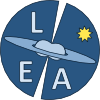The Konus-Wind Catalog of Gamma-Ray Bursts with Known Redshifts. I. Bursts Detected in the Triggered Mode
A. Tsvetkova1, D. Frederiks1, S. Golenetskii1, A. Lysenko1, P. Oleynik1, V. Pal'shin2, D. Svinkin1, M. Ulanov1, T. Cline3,5, K. Hurley4, and R. Aptekar1
- 1 Ioffe Institute, Politekhnicheskaya 26, St. Petersburg 194021, Russia
- 2 Vedeneeva 2-31, St. Petersburg, Russia
- 3 NASA Goddard Space Flight Center, Greenbelt, MD 20771, USA
- 4 Space Sciences Laboratory, University of California, 7 Gauss Way, Berkeley, CA 94720-7450, USA
- 5 Emeritus
ABSTRACT
In this catalog, we present the results of a systematic study of gamma-ray bursts (GRBs) with reliable redshift estimates detected in the triggered mode of the Konus-Wind (KW) experiment during the period from 1997 February to 2016 June. The sample consists of 150 GRBs (including 12 short/hard bursts) and represents the largest set of cosmological GRBs studied to date over a broad energy band. From the temporal and spectral analyses of the sample, we provide the burst durations, the spectral lags, the results of spectral fits with two model functions, the total energy fluences, and the peak energy fluxes. Based on the GRB redshifts, which span the range 0.1 ≤ z ≤ 5, we estimate the rest-frame, isotropic-equivalent energy, and peak luminosity. For 32 GRBs with reasonably constrained jet breaks, we provide the collimation-corrected values of the energetics. We consider the behavior of the rest-frame GRB parameters in the hardness–duration and hardness–intensity planes, and confirm the “Amati” and “Yonetoku” relations for Type II GRBs. The correction for the jet collimation does not improve these correlations for the KW sample. We discuss the influence of instrumental selection effects on the GRB parameter distributions and estimate the KW GRB detection horizon, which extends to z ~ 16.6, stressing the importance of GRBs as probes of the early universe. Accounting for the instrumental bias, we estimate the KW GRB luminosity evolution, luminosity and isotropic-energy functions, and the evolution of the GRB formation rate, which are in general agreement with those obtained in previous studies.
ADS Link: 2017ApJ...850..161T
Online materials
- Figures: light curves and spectra
- Each burst is presented on two pages. Light curves are on the first page, trigger one is on the left panel, waiting mode one is on the right panel. Second page features spectral parameters (for the best fit model and for the good one) and the best fit plots with chi-squared panels.
- ASCII tables
A. Tsvetkova, tsvetkova@mail·ioffe·ru


